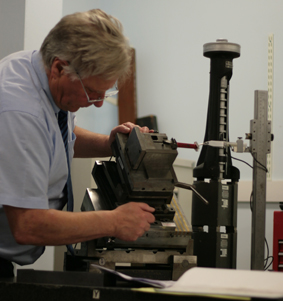The “general-purpose (GP) screw” can trace its design back to the 1960s. The idea was to have one screw design capable of handling a range of polymers (except for rigid PVC). Back then, the number of polymers was limited compared with today and the competition for production efficiency was not as great. So the concept made some sense.
With the development of more advanced extrusion screw-design technology and new types of polymers, this concept had largely disappeared. Most processors today understand the need to have specific screw designs for each polymer to maximize output and melt quality. Yet requests for GP screws are being made more frequently as a result of the rapid growth in recycling. The demand for clean post-consumer reclaim is strong, and obtaining a steady supply to support a business requires constantly searching for new sources—unless one has an in-house source. Often the recycler processes several basic kinds of polymers and changes several times a week on an extrusion line—hence the increase in requests for GP screws.
Still, there is no such thing as a “true” GP screw, due to the myriad individual polymer characteristics involved for efficient processing. In the design of a high-productivity screw, the following list reveals some but not all the data considered:
• Viscosity at various shear rates and temperatures;
• Glass-transition temperature;
• Specific heat and heat of fusion;
• Melting point and processing temperature;
• Solid, bulk and melt density;
• Feeding characteristics.
As an example, if we compare a sheet-grade HDPE regrind to a sheet-grade PET regrind at equal volume of output (in.³/sec), they require about the same energy input to reach a typical processing temperature. However, the typical viscosity for the HDPE in the screw will be almost double that of the PET. Keep in mind that the bulk of the energy input is done by shear stress in the polymer from the rotating screw—not from barrel heating. At equal screw speed, the resultant energy input is then largely proportional to the polymer viscosity.
As a result, the HDPE will absorb 50% more heat from viscous dissipation than the PET as it passes through the screw. If the screw was an ideal design for the PET, the HDPE would be well under its ideal melt temperature and only partially melted. If it was an ideal design for HDPE the PET would be overheated and possibly degraded.
Adjustments could be made to the operating conditions to try to better balance the energy input by building head pressure or reducing the screw speed. But both of these adjustments reduce output—an undesirable outcome. In addition to the energy input, the differences in feeding and melting rate could lead to plugging and surging because of the differences in the two polymers’ viscosity and frictional characteristics.
A Better Way
A better solution is to run the same type of polymer on an extruder for as long as possible. In most cases, pretty broad differences in melt flow or melt index can be run on one screw effectively as long as it’s the same basic polymer. If changeover between polymers is required for the recycle mix, the extruder should be set up with the items that minimize the time to change screws. Such items are a screw pusher, lifting equipment, quick-disconnect adapter/die, and easily movable downstream equipment such as the pelletizer so there is space to easily remove the screw. Even though many may look at that as time lost, the improvement in processing rate and melt quality can easily make up the difference
Barrier screws tend to be less flexible on a variety of polymer types of recycle than conventional single-flighted screws, because their basic concept is to be designed for a specific melting rate and energy input. Conventional single-flighted screws generally have a wider operating window, but it is still limited. A simple test is to run the types of recycle common to your business and compare the outputs. One type will always run at higher outputs, so simply compare the change in output to the time to change screws. When the proper equipment is available, screw changes can be kept to 1-2 hr, depending on the size of the extruder.
Don’t forget about the purging time when trying to run different polymers on the same screw. The combination of the lost time and wasted polymer alone can equal the cost to change screws.
About the Author: Jim Frankland is a mechanical engineer who has been involved in all types of extrusion processing for more than 40 years. He is now president of Frankland Plastics Consulting, LLC. Contact [email protected] or (724) 651-9196.
RELATED CONTENT
- What Output Should You Expect?You can get a rough estimate of the potential output if you know the drive horsepower of your machine and the thermal characteristics of one of the materials you’ll be running.
- Where Does Shear Heating Occur? Here’s How to Find OutOne of the least understood yet most important concepts is viscous dissipation, which is the shearing or stretching of the polymer between the rotating screw and stationary barrel, causing heat to develop in the material.
- Extrusion: Where’s the Data? The Importance of Melt Strength in ExtrusionAll extrusion processes depend to some degree on the melt strength of the polymer, and this property is generally a no-show on data sheets.
Resource: https://www.ptonline.com/articles/general-purpose-screws-on-the-comeback






